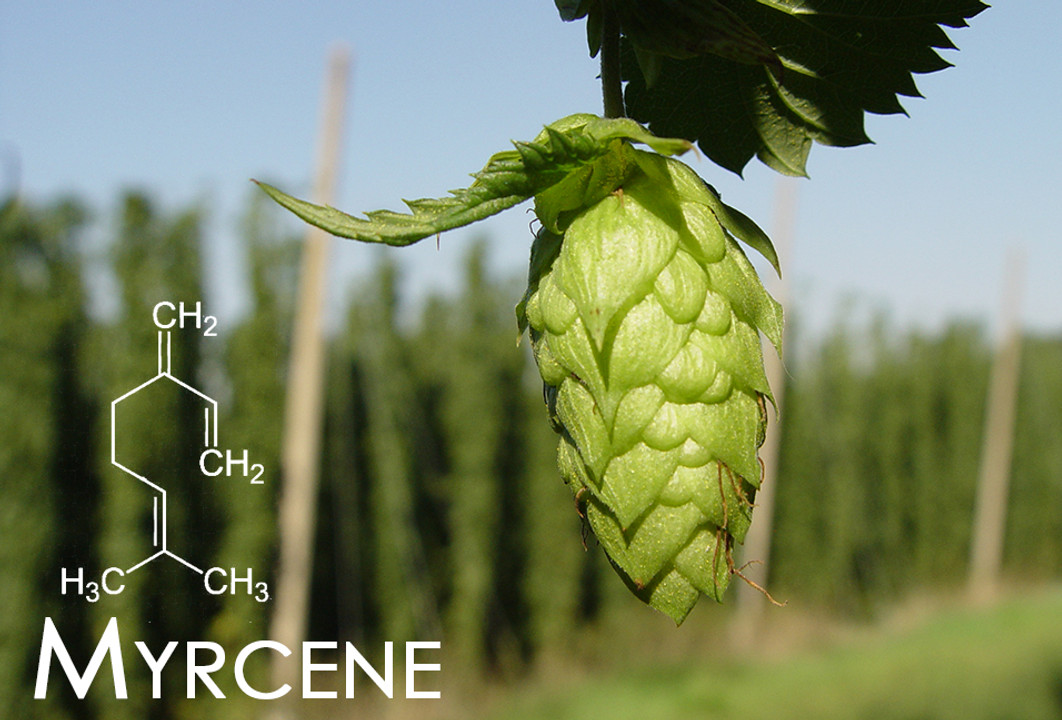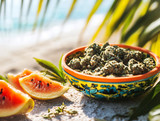Terpene Tuesday : Myrcene
Myrcene is familiar to anyone who smokes cannabis as this is its most abundant terpene. It can account for up to 20% of the terpene profile in the commercial cannabis of today and roughly 40% of strains are myrcene dominant. Everyone recognizes it as this is what lends the traditional “skunk” aroma. It’s also found in hops, thyme, lemongrass and mango. This is how mango became a cult fruit. Rumor always had it, that if you ate mango ahead of time, it would increase THC’s effectiveness. Studies now show, that thanks to myrcene, mango really does increase the onset time of THC if mango fruit is eaten 45 minutes ahead of time.
Myrcene has a relaxing effect and has been used for centuries as a sleep aid and muscle relaxer. Lemongrass has been used in South America in tea form for its high myrcene content to help one sleep. Myrcene shows its benefits in improving other terpenes, known as the ‘entourage effect’. It does this by helping them cross the blood-brain barrier. Myrcene is also a monoterpene, meaning it provides the building blocks for other secondary and tertiary terpenes, which so far, is about half of all known terpenes.
Because so many commercial strains these days are so myrcene heavy, this actually leaves a lot of room for breeders to get creative. New strains based wholly on their terpene profiles that are dominant in other terpenes could be a whole new playing field. Different terpenes have different effects and myrcene helps them do their job even better. However, while Myrcene seems to be so important in creating and empowering other terpenes, and many strains are myrcene dominant, we can’t forget how important to this process all the other terpenes are and how, with myrcene as the catalyst, the other terpenes can become game changers.
Advice & articles
-
Embracing Fall: Harvest Time, Festivals, and the Benefits of Hemp and THCA
Oct 6th 2025As the leaves turn vibrant shades of orange and gold, and the air becomes crisp, fall invites us to
-
Summer Cannabis Vibes
Jul 21st 2025Chill Vibes Only: How Smoking Cannabis Can Help You Relax This Summer There’s something magical abou
-
Veterans and Holistic Healing
May 31st 2024Military and wellness are two concepts that may seem contradictory at first glance, but they are int
- Read more articles




